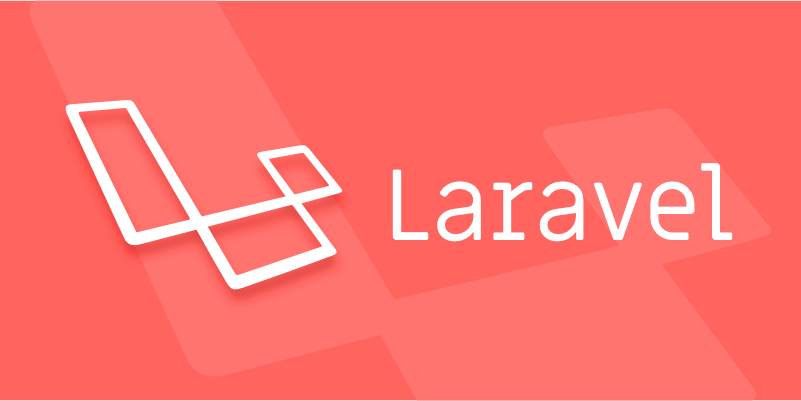A resource controller in Laravel handles all standard CRUD operations using RESTful conventions, reducing boilerplate and improving consistency. 1. Generate it with php artisan make:controller PostController --resource, which creates seven methods: index(), create(), store(), show($id), edit($id), update($id), and destroy($id). 2. Register routes using Route::resource('posts', PostController::class); to automatically map HTTP verbs and URLs to controller methods. 3. Each route corresponds to a specific action, such as GET /posts → index() and DELETE /posts/{id} → destroy(). 4. Customize with only() or except() to include or exclude specific methods. 5. Resource controllers streamline development for full CRUD models, promote clean routing, and allow focus on business logic instead of repetitive setup, making them the ideal starting point for model-based operations.

A resource controller in Laravel is a type of controller that handles all the typical HTTP actions (like create, read, update, delete) for a resource using a single, standardized setup. It’s designed to follow RESTful conventions, making it easier to manage routes and actions for a model without writing each method and route manually.

For example, if you’re building a blog, a Post resource would typically need routes for listing posts, showing a single post, creating a new post, updating, and deleting. Instead of defining each route and method separately, Laravel lets you generate all of them at once using a resource controller.
How to Create a Resource Controller
You can generate a resource controller using Artisan:

php artisan make:controller PostController --resource
This creates a controller with seven default methods:
index()— Display a list of postscreate()— Show a form to create a new poststore()— Save a newly created postshow($id)— Display a specific postedit($id)— Show a form to edit an existing postupdate($id)— Update the specified postdestroy($id)— Delete the specified post
Registering Resource Routes
In your routes file (like web.php or api.php), you can register all routes for the resource with one line:

Route::resource('posts', PostController::class);This single line creates all the necessary RESTful routes, mapping each URL and HTTP verb to the correct controller method.
For example:
GET /posts→index()GET /posts/create→create()POST /posts→store()GET /posts/{id}→show()GET /posts/{id}/edit→edit()PUT/PATCH /posts/{id}→update()DELETE /posts/{id}→destroy()
Why Use Resource Controllers?
- Less boilerplate: You don’t have to define each route and method from scratch.
- Consistency: Follows REST conventions, making your app predictable.
- Faster development: Great for CRUD operations on models.
- Flexible: You can exclude or only include certain methods if needed:
Route::resource('posts', PostController::class)->only(['index', 'show']);
Route::resource('posts', PostController::class)->except(['destroy']);You can also name individual resource routes or group them under middleware, prefixes, etc.
Summary
A resource controller in Laravel is a convenient way to handle all standard actions on a resource using RESTful patterns. It saves time, reduces code duplication, and keeps your routing clean and organized. If you're working with models that need full CRUD functionality, using a resource controller is usually the best starting point.
Basically, it's Laravel’s way of saying: "I’ll handle the standard stuff so you can focus on the logic that matters."
The above is the detailed content of What is a resource controller in Laravel?. For more information, please follow other related articles on the PHP Chinese website!

Hot AI Tools

Undress AI Tool
Undress images for free

Undresser.AI Undress
AI-powered app for creating realistic nude photos

AI Clothes Remover
Online AI tool for removing clothes from photos.

Clothoff.io
AI clothes remover

Video Face Swap
Swap faces in any video effortlessly with our completely free AI face swap tool!

Hot Article

Hot Tools

Notepad++7.3.1
Easy-to-use and free code editor

SublimeText3 Chinese version
Chinese version, very easy to use

Zend Studio 13.0.1
Powerful PHP integrated development environment

Dreamweaver CS6
Visual web development tools

SublimeText3 Mac version
God-level code editing software (SublimeText3)
 Working with pivot tables in Laravel Many-to-Many relationships
Jul 07, 2025 am 01:06 AM
Working with pivot tables in Laravel Many-to-Many relationships
Jul 07, 2025 am 01:06 AM
ToworkeffectivelywithpivottablesinLaravel,firstaccesspivotdatausingwithPivot()orwithTimestamps(),thenupdateentrieswithupdateExistingPivot(),managerelationshipsviadetach()andsync(),andusecustompivotmodelswhenneeded.1.UsewithPivot()toincludespecificcol
 Sending different types of notifications with Laravel
Jul 06, 2025 am 12:52 AM
Sending different types of notifications with Laravel
Jul 06, 2025 am 12:52 AM
Laravelprovidesacleanandflexiblewaytosendnotificationsviamultiplechannelslikeemail,SMS,in-appalerts,andpushnotifications.Youdefinenotificationchannelsinthevia()methodofanotificationclass,andimplementspecificmethodsliketoMail(),toDatabase(),ortoVonage
 Strategies for optimizing Laravel application performance
Jul 09, 2025 am 03:00 AM
Strategies for optimizing Laravel application performance
Jul 09, 2025 am 03:00 AM
Laravel performance optimization can improve application efficiency through four core directions. 1. Use the cache mechanism to reduce duplicate queries, store infrequently changing data through Cache::remember() and other methods to reduce database access frequency; 2. Optimize database from the model to query statements, avoid N 1 queries, specifying field queries, adding indexes, paging processing and reading and writing separation, and reduce bottlenecks; 3. Use time-consuming operations such as email sending and file exporting to queue asynchronous processing, use Supervisor to manage workers and set up retry mechanisms; 4. Use middleware and service providers reasonably to avoid complex logic and unnecessary initialization code, and delay loading of services to improve startup efficiency.
 Managing database state for testing in Laravel
Jul 13, 2025 am 03:08 AM
Managing database state for testing in Laravel
Jul 13, 2025 am 03:08 AM
Methods to manage database state in Laravel tests include using RefreshDatabase, selective seeding of data, careful use of transactions, and manual cleaning if necessary. 1. Use RefreshDatabasetrait to automatically migrate the database structure to ensure that each test is based on a clean database; 2. Use specific seeds to fill the necessary data and generate dynamic data in combination with the model factory; 3. Use DatabaseTransactionstrait to roll back the test changes, but pay attention to its limitations; 4. Manually truncate the table or reseed the database when it cannot be automatically cleaned. These methods are flexibly selected according to the type of test and environment to ensure the reliability and efficiency of the test.
 Choosing between Laravel Sanctum and Passport for API authentication
Jul 14, 2025 am 02:35 AM
Choosing between Laravel Sanctum and Passport for API authentication
Jul 14, 2025 am 02:35 AM
LaravelSanctum is suitable for simple, lightweight API certifications such as SPA or mobile applications, while Passport is suitable for scenarios where full OAuth2 functionality is required. 1. Sanctum provides token-based authentication, suitable for first-party clients; 2. Passport supports complex processes such as authorization codes and client credentials, suitable for third-party developers to access; 3. Sanctum installation and configuration are simpler and maintenance costs are low; 4. Passport functions are comprehensive but configuration is complex, suitable for platforms that require fine permission control. When selecting, you should determine whether the OAuth2 feature is required based on the project requirements.
 Implementing Database Transactions in Laravel?
Jul 08, 2025 am 01:02 AM
Implementing Database Transactions in Laravel?
Jul 08, 2025 am 01:02 AM
Laravel simplifies database transaction processing with built-in support. 1. Use the DB::transaction() method to automatically commit or rollback operations to ensure data integrity; 2. Support nested transactions and implement them through savepoints, but it is usually recommended to use a single transaction wrapper to avoid complexity; 3. Provide manual control methods such as beginTransaction(), commit() and rollBack(), suitable for scenarios that require more flexible processing; 4. Best practices include keeping transactions short, only using them when necessary, testing failures, and recording rollback information. Rationally choosing transaction management methods can help improve application reliability and performance.
 Handling HTTP Requests and Responses in Laravel.
Jul 16, 2025 am 03:21 AM
Handling HTTP Requests and Responses in Laravel.
Jul 16, 2025 am 03:21 AM
The core of handling HTTP requests and responses in Laravel is to master the acquisition of request data, response return and file upload. 1. When receiving request data, you can inject the Request instance through type prompts and use input() or magic methods to obtain fields, and combine validate() or form request classes for verification; 2. Return response supports strings, views, JSON, responses with status codes and headers and redirect operations; 3. When processing file uploads, you need to use the file() method and store() to store files. Before uploading, you should verify the file type and size, and the storage path can be saved to the database.
 Generating URLs for Named Routes in Laravel.
Jul 16, 2025 am 02:50 AM
Generating URLs for Named Routes in Laravel.
Jul 16, 2025 am 02:50 AM
The most common way to generate a named route in Laravel is to use the route() helper function, which automatically matches the path based on the route name and handles parameter binding. 1. Pass the route name and parameters in the controller or view, such as route('user.profile',['id'=>1]); 2. When multiple parameters, you only need to pass the array, and the order does not affect the matching, such as route('user.post.show',['id'=>1,'postId'=>10]); 3. Links can be directly embedded in the Blade template, such as viewing information; 4. When optional parameters are not provided, they are not displayed, such as route('user.post',






